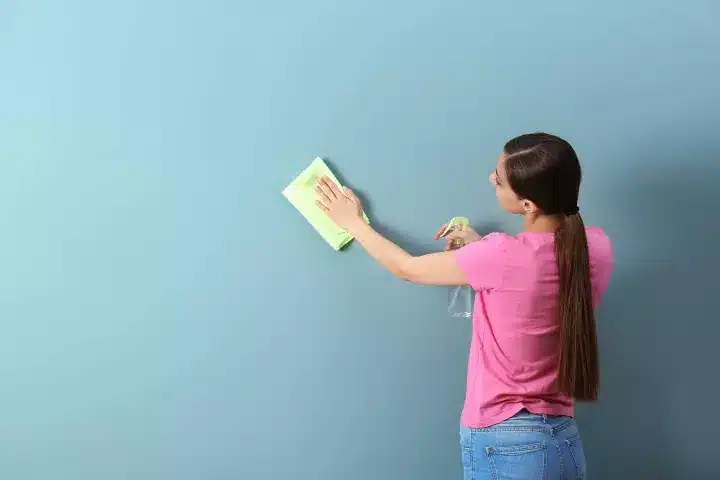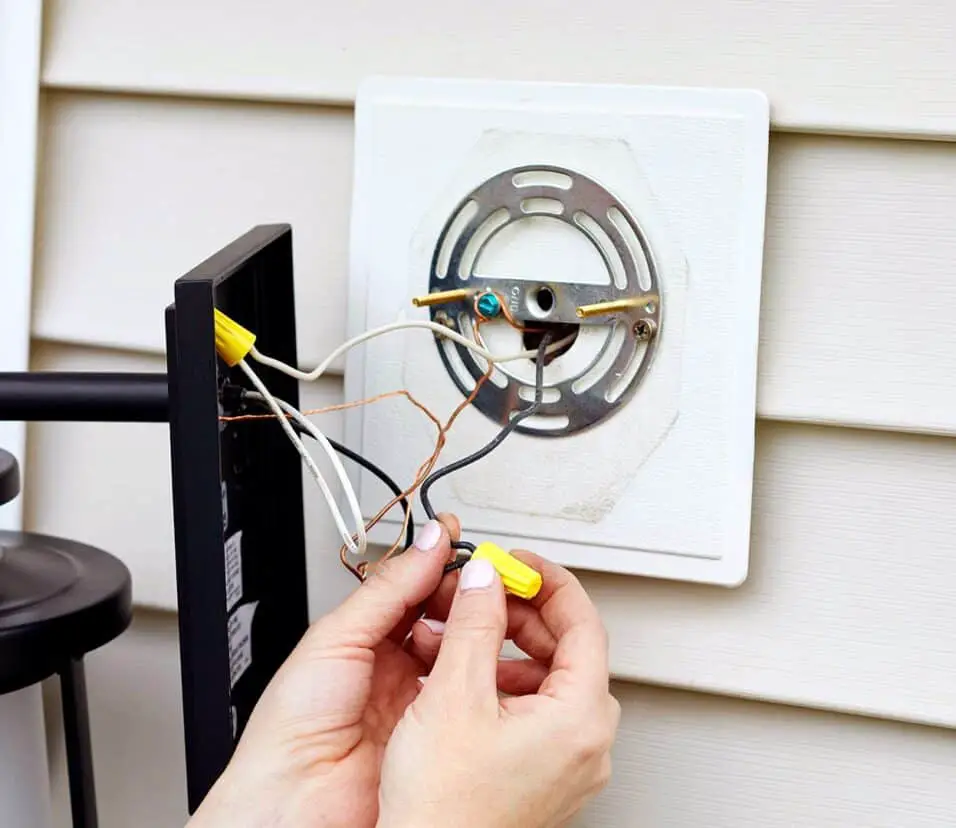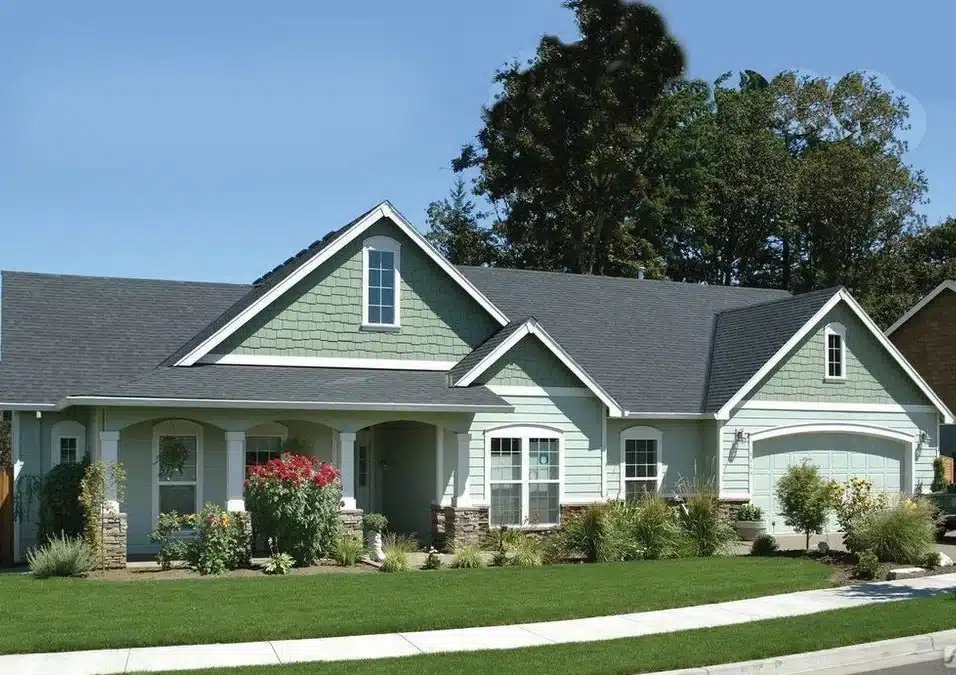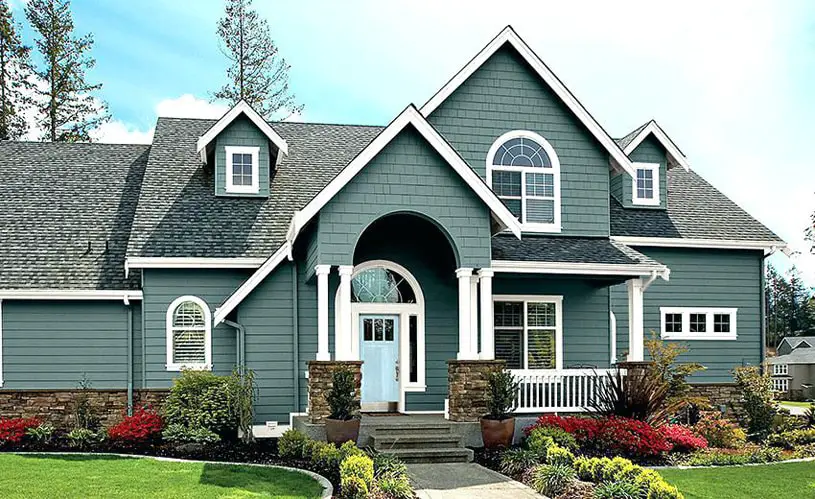What To Use To Wash Exterior Walls Before Painting
Introduction
What To Use To Wash Exterior Walls Before Painting: When it comes to painting the exterior walls of your home, proper preparation is key to achieving a long-lasting and professional-looking finish. One crucial step in the preparation process is washing the walls before applying any paint. This not only helps to remove dirt, grime, and other contaminants but also ensures that the paint adheres properly to the surface, resulting in a smooth and even application.
So, what should you use to wash your exterior walls before painting? There are several options available for cleaning the exterior walls, each with its own advantages and considerations. One common method is to use a pressure washer, which utilizes a high-pressure stream of water to remove dirt and debris. This can be particularly effective for removing stubborn stains or mold and mildew. However, it’s important to use caution when using a pressure washer, as excessive pressure or improper technique can damage the surface of the walls.
Another option is to use a mixture of water and a mild detergent or cleaning solution. This can be applied using a sponge, brush, or sprayer, depending on the size and condition of the walls. The detergent helps to break down and remove dirt and grime, while the water rinses away any residue. It’s important to choose a mild detergent that is safe for the surface you are cleaning, as harsh chemicals can cause damage or discoloration.
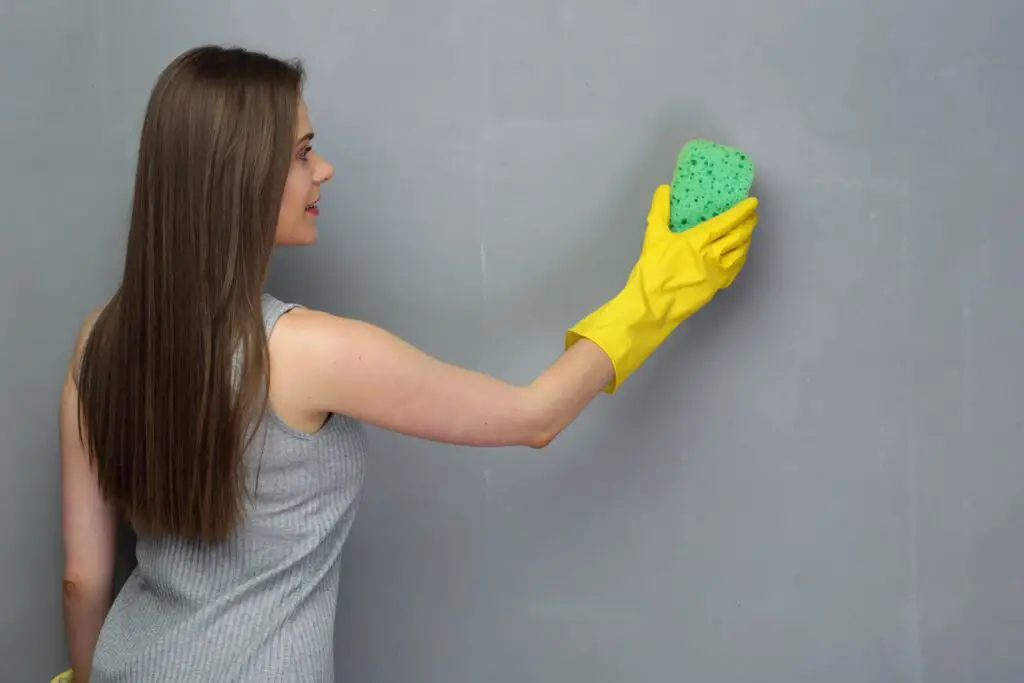
What is the best thing to wash exterior walls with?
High pressure water cleaners
One of the best tools for cleaning exterior walls is a high pressure water cleaner.
When it comes to washing exterior walls, it is important to choose the right cleaning solution to ensure effective and safe results. The finest external wall cleaner depends on the material and filth or grime. Different wall kinds require different cleaning products and methods, so consider these variables before choosing.
For most exterior walls, a mixture of mild detergent and water is a safe and effective cleaning solution. This can be used for walls made of materials such as vinyl, stucco, or painted wood. The mild detergent helps to break down dirt and grime without causing any damage to the surface. It is important to use a soft-bristle brush or a sponge to gently scrub the walls and remove any stubborn stains.
In some cases, walls may require a stronger cleaning solution to remove tough stains or mold and mildew. In such situations, a mixture of bleach and water can be used. However, it is important to be cautious when using bleach, as it can cause discoloration or damage to certain types of materials. It is recommended to test the solution on a small, inconspicuous area of the wall before applying it to the entire surface.
For walls made of brick or stone, a pressure washer can be an effective tool for cleaning. However, it is important to use the pressure washer with caution, as excessive pressure can cause damage to the mortar or the surface of the walls. It is recommended to start with a low-pressure setting and gradually increase if necessary. Additionally, it is important to use a cleaning solution specifically designed for use with pressure washers to ensure optimal results.
Do you need to clean exterior before painting?
Before the house exterior painting, it is important to remove dirt, grease, and grime from the exterior walls so that the primer and new coat of paint adhere properly. You can clean the exterior walls with water by using a simple bucket and mug, a garden hose, or a pressure spray water pump.
Yes, it is essential to clean the exterior before painting. Cleaning the surface ensures that the paint adheres properly and provides a smooth and long-lasting finish. Whether you are painting a house, a fence, or any other exterior surface, cleaning is a crucial step that should not be overlooked.
Cleaning the exterior before painting helps to remove dirt, dust, and grime that may have accumulated over time. These contaminants can prevent the paint from adhering properly to the surface, resulting in a patchy and uneven finish. By cleaning the surface, you create a clean and smooth canvas for the paint to adhere to, ensuring a more professional-looking result.
In addition to removing dirt and grime
Cleaning the exterior also helps to remove any mildew or mold that may be present. These growths can cause the paint to peel or bubble, leading to premature paint failure. By thoroughly cleaning the surface, you eliminate any potential sources of damage and ensure that the paint will adhere properly and last longer.
There are several methods for cleaning the exterior before painting, depending on the type of surface and the extent of the dirt and grime. Pressure washing is a popular choice for larger surfaces, such as houses or fences, as it can quickly and effectively remove dirt and debris. For smaller surfaces or areas with stubborn stains, scrubbing with a brush and a mild detergent may be necessary.
Overall, cleaning the exterior before painting is a crucial step that should not be skipped. It helps to ensure that the paint adheres properly, provides a smooth and professional-looking finish, and extends the lifespan of the paint job. By taking the time to clean the surface before painting, you can achieve a more durable and aesthetically pleasing result.
Do professional painters clean before painting?
The answer is yes. Professional painters understand the importance of preparing the surface for painting by cleaning, scraping off old paint, priming, and applying caulk or putty. Preparing your wall correctly will ensure a longer-lasting finish with fewer touch-ups needed down the road.
Yes, professional painters typically clean the surfaces before painting. Cleaning the surfaces is an essential step in the painting process as it helps to ensure a smooth and long-lasting finish. Whether it’s a residential or commercial project, professional painters understand the importance of preparing the surfaces properly before applying paint.
Cleaning the surfaces before painting serves several purposes:
1. Removing dirt and debris: Over time, surfaces can accumulate dust, dirt, and other debris. These particles can affect the adhesion of the paint and result in an uneven finish. By cleaning the surfaces, professional painters can remove these contaminants, providing a clean canvas for the paint to adhere to.
2. Kitchens, baths, and other high-traffic areas may have grease or stains that must be removed before painting. Professional painters use appropriate cleaning agents to eliminate these substances, ensuring that the paint adheres properly and doesn’t peel or chip.
3. Removing old paint or wallpaper: If the surfaces have old paint or wallpaper, professional painters will often remove them before applying a fresh coat of paint. This step helps to create a smooth and even surface for the new paint, preventing any imperfections from showing through.
4. Repairing damaged areas: Before painting, professional painters inspect the surfaces for any cracks, holes, or other damage. They will repair these areas, ensuring that the paint goes on smoothly and that the final result is flawless.
Professional painters understand the importance of cleaning the surfaces before painting. It helps to remove dirt, debris, grease, stains, and old paint, ensuring a smooth and long-lasting finish. By properly preparing the surfaces, professional painters can achieve the best possible results for their clients.
What to do before painting exterior walls?
1: Pressure-Wash Walls. To ensure best coverage, remove dirt and dust buildup from house using a pressure washer.
2: Repair Damaged Surfaces.
3: Remove Loose Paint.
4: Caulk Trim.
5: Prime Stains.
6: Protect Doors, Windows and Lights.
7: Paint Exterior.
8: Paint Trim and Doors.
These steps include preparing the surface, choosing the right paint and tools, and taking necessary safety precautions. By following these steps, you can achieve a professional-looking paint job that will enhance the appearance and protect the exterior of your home.
Firstly, it is crucial to prepare the surface before painting.
This involves cleaning the walls to remove any dirt, dust, or mildew that may be present. A pressure washer or scrub brush and detergent may clean walls well.It is important to allow the walls to dry completely before proceeding to the next step.
Secondly, choosing the right paint and tools is essential for a successful exterior paint job. High-quality exterior paint is advised. This type of paint is more durable and resistant to weather conditions.
Thirdly, taking necessary safety precautions is crucial when painting exterior walls. This includes wearing protective clothing such as gloves, goggles, and a mask to protect against paint fumes and potential hazards. It is also important to use ladders or scaffolding properly to ensure stability and prevent accidents. If the walls are located at a significant height, it may be necessary to hire a professional painter who has the expertise and equipment to safely complete the job.
Lastly, it is important to consider the weather conditions before painting exterior walls. Dry, warm weather is best for painting to promote appropriate drying and adherence. It is best to avoid painting on extremely hot or cold days, as extreme temperatures can affect the quality and longevity of the paint job. Additionally, it is important to protect the surrounding areas such as windows, doors, and landscaping by covering them with drop cloths or plastic sheets.
Can you wash walls with soapy water?
If not, you can lightly wipe the walls using a mild cleaning solution of dishwashing liquid soap and water (a drop or two of mild liquid dishwashing soap per half-bucket of water) but be sure to avoid the seams and to not over-wet the paper to avoid peeling.
Yes, you can wash walls with soapy water. In fact, using soapy water is one of the most effective and affordable ways to clean walls. Whether you have painted walls or wallpapered ones, soapy water can help remove dirt, grime, and stains without causing any damage.
Using soapy water is a safe and gentle method to clean them.
Painted walls: If you have painted walls, using soapy water is a safe and gentle method to clean them. Start by mixing a small amount of mild dish soap or liquid detergent with warm water in a bucket. Use a sponge or a soft cloth to dip into the soapy water and gently scrub the walls in a circular motion. Be sure to wring out the excess water from the sponge or cloth to avoid dripping. Rinse the walls with clean water and dry them with a soft towel or a clean cloth.
Wallpapered walls: Soapy water can also be used to clean wallpapered walls. However, it is important to be cautious and avoid using excessive water, as it can cause the wallpaper to peel or become damaged. Mix a small amount of mild dish soap or liquid detergent with warm water in a bucket. Dip a sponge or a soft cloth into the soapy water and gently wipe the wallpapered walls, being careful not to saturate the wallpaper. Rinse the sponge or cloth frequently and change the water if it becomes dirty. Finally, use a clean, damp cloth to wipe away any soap residue and dry the walls with a soft towel or a clean cloth.
Benefits of using soapy water:
Using soapy water to wash walls has several benefits. Firstly, it is a cost-effective method as it requires minimal supplies that are readily available in most households. Secondly, soapy water is gentle on surfaces and does not contain harsh chemicals that can damage the walls. Additionally, it is an environmentally friendly option as it does not contribute to air pollution or water contamination.
When it comes to washing exterior walls before painting, it is important to use the right cleaning agents to ensure a clean and smooth surface. The recommended cleaning agents for this task include trisodium phosphate (TSP), bleach, and mild detergent.
TSP is a powerful cleaner that effectively removes dirt, grease, and grime from the walls. However, it is important to follow the instructions on the packaging and wear protective gear, such as gloves and goggles, when using TSP.
Bleach is another effective cleaning agent that can be used to wash exterior walls. It is particularly useful for removing mold and mildew. However, it is important to dilute the bleach with water before using it and to rinse the walls thoroughly after cleaning to remove any residue.
Are there any specific techniques or tools that should be used to wash exterior walls before painting?
When it comes to washing exterior walls before painting, there are indeed specific techniques and tools that can help ensure a thorough and effective cleaning process. These techniques and tools are essential for achieving a clean surface that will allow the paint to adhere properly and result in a long-lasting finish.
One important technique to consider is pressure washing. This involves using a high-pressure water spray to remove dirt, grime, and loose paint from the walls. Pressure washing is particularly effective for removing stubborn stains and debris that may be difficult to remove with traditional cleaning methods. However, it is important to use caution when pressure washing, as excessive pressure can damage the surface of the walls. It is recommended to start with a lower pressure setting and gradually increase if necessary.
In addition to pressure washing, scrubbing with a brush or sponge can also be beneficial. This allows for a more targeted and detailed cleaning, especially in areas that may be harder to reach with a pressure washer. A brush with stiff bristles or a sponge with an abrasive side can help to loosen and remove dirt and grime effectively. It is important to use a gentle yet firm motion to avoid damaging the surface of the walls.
Are there any safety concerns while washing external walls before painting?
When washing exterior walls before painting, it is important to take certain precautions and safety measures to ensure a successful and safe painting process. Firstly, it is crucial to wear protective clothing, including gloves, goggles, and a mask, to protect yourself from any potential chemicals or debris that may be present in the cleaning agents or on the walls.
Additionally, it is important to work on a stable and secure ladder or scaffolding to avoid any accidents or falls. Make sure to inspect the ladder or scaffolding for any damages or defects before use.
Furthermore, before starting the cleaning process, it is important to remove any loose or flaking paint from the walls to create a smooth surface for painting. It is also advisable to cover nearby plants, windows, and other surfaces with plastic or drop cloths to protect them from any potential damage or overspray.
How long should the walls be left to dry after washing before painting?
After washing the exterior walls, it is crucial to allow sufficient drying time before proceeding with the painting process. The drying time can vary depending on several factors such as weather conditions, wall material, and the cleaning agents used.
Proper drying time is essential to ensure that the paint adheres well to the surface and prevents any moisture-related issues in the future. Additionally, moisture trapped beneath the paint can promote the growth of mold or mildew, compromising the longevity and appearance of the paint job.
It is important to consider the weather conditions when determining the drying time. If the weather is humid or rainy, it may take longer for the walls to dry. In such cases, it is advisable to wait for a dry and sunny period to ensure optimal drying. Using fans or dehumidifiers can also help expedite the drying process.
Can outside walls be prepared for painting using other procedures or products?
Yes, there are alternative methods and products that can be used to prepare exterior walls for painting. One alternative method is power washing, which involves using a high-pressure water spray to remove dirt, grime, and loose paint from the walls. However, it is important to use caution when power washing, as too much pressure can damage the walls or force water into the interior of the building.
Another alternative method is using a chemical cleaner or stripper to remove dirt, stains, and old paint from the walls. Chemical cleaners can be especially useful for removing stubborn stains or paint that is difficult to scrape off. However, it is important to follow the manufacturer’s instructions and take proper safety precautions when using these products, as they can be toxic and may require protective gear.
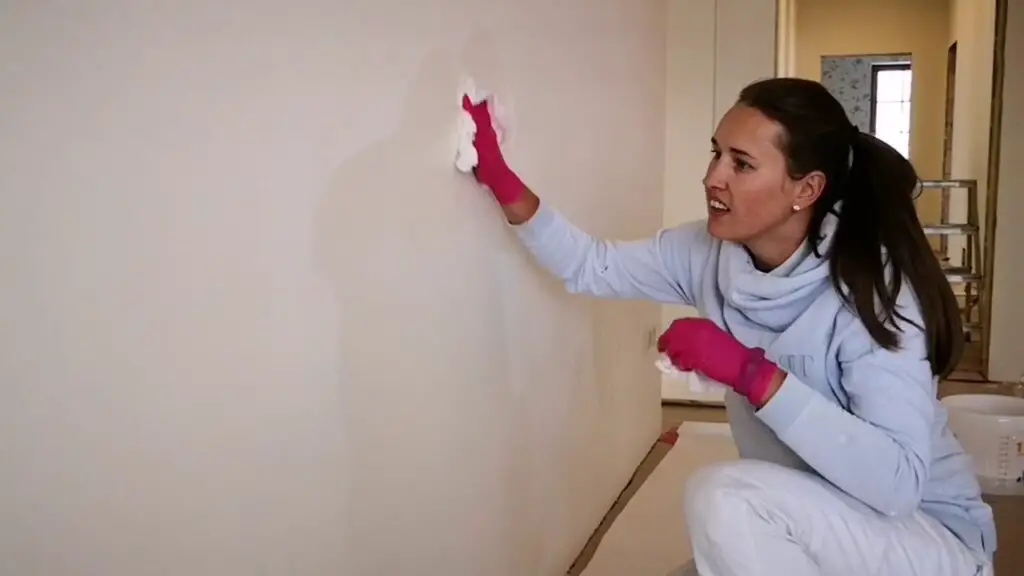
Conclusion
Overall, when it comes to washing exterior walls before painting, there are several options to consider. One popular choice is to use a pressure washer, as it can effectively remove dirt, grime, and loose paint from the surface. This method is more gentle on the walls but may require more time and effort to achieve the desired results.
It is also important to consider the type of surface being washed. Different materials, such as wood, stucco, or brick, may require different cleaning methods. For example, wood surfaces may benefit from a mild bleach solution to remove mold or mildew, while stucco or brick may require a more abrasive cleaner to remove stubborn stains.
Furthermore, safety should always be a top priority when washing exterior walls. It is important to wear protective clothing, such as gloves and goggles, to prevent any potential injuries. Additionally, it is crucial to follow the manufacturer’s instructions when using any cleaning products or equipment. If unsure about the best method or products to use, it may be beneficial to consult with a professional painter or contractor who can provide guidance and expertise.
Washing exterior walls before exterior painting is an essential step to ensure a clean and smooth surface for the paint to adhere to. Safety should always be a priority, and consulting with a professional may be beneficial for those who are unsure about the best methods or products to use.



